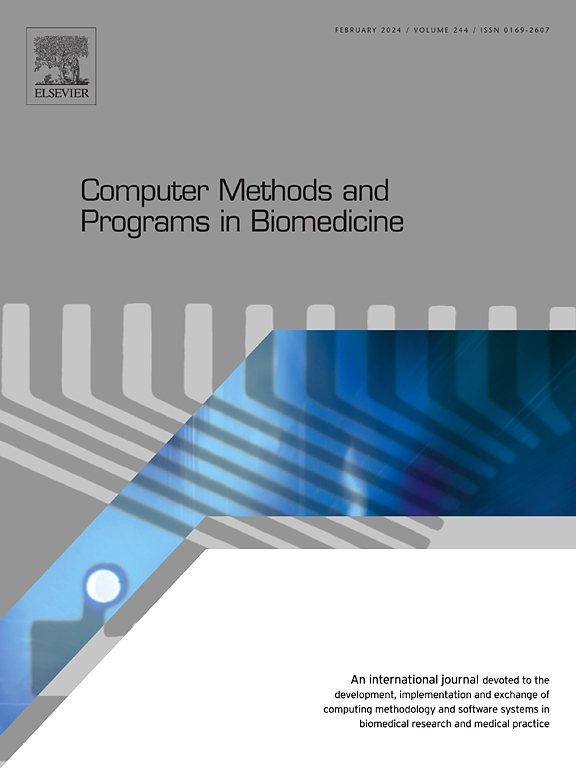Unveiling Alzheimer’s disease through brain age estimation using multi-kernel regression network and magnetic resonance imaging
IF 4.9
2区 医学
Q1 COMPUTER SCIENCE, INTERDISCIPLINARY APPLICATIONS
引用次数: 0
Abstract
Background and Objective:
Structural magnetic resonance imaging (MRI) studies have unveiled age-related anatomical changes across various brain regions. The disparity between actual age and estimated age, known as the Brain-Predicted Age Difference (Brain-PAD), serves as an indicator for predicting neurocognitive ailments or brain abnormalities resulting from diseases. This study aims to develop an accurate brain age prediction model that can assist in identifying potential neurocognitive impairments.
Methods:
The present study implemented a brain age prediction model using a ResNet-50 deep network and a multi-kernel extreme learning machine (MKELM) regression network, relying on MRI images. Kernel methods translate input information into higher-dimensional space by introducing nonlinearity and enabling the model to grasp complicated data patterns. A multi-kernel function combines the Gaussian and polynomial kernels and is incorporated into the brain age regression model. The model effectively utilizes the benefits of both kernel functions to estimate the ages accurately. MRI scans are segmented into gray matter (GM) and white matter (WM) maps preprocessed and extracted of significant features using the ResNet-50 deep network. Extracted features of the WM and GM datasets are fed into the MKELM regression model for brain age prediction.
Results:
The proposed age estimation framework achieved 3.06 years of mean absolute error (MAE) and 4.12 years of root mean square error (RMSE) on healthy controls (HC) WM scans, and on GM scans, 2.73 years of MAE and 3.65 years of RMSE values. To further validate the importance of Brain-PAD as a biomarker for identifying brain health conditions, an independent testing dataset of mild cognitive impairment (MCI) and Alzheimer’s disease (AD) subjects age is predicted. The Brain-PAD values for AD subjects’ GM images are significantly higher compared to those of HC and MCI subjects, indicating distinct brain health conditions. Furthermore, variations in GM and WM tissue were identified in AD subjects, revealing that the parahippocampus and corpus callosum were notably affected.
Conclusion:
Our findings underscore the potential of Brain-PAD as a significant biomarker for assessing brain health, with implications for early detection of neurocognitive diseases. The developed framework effectively estimates brain age using MRI, contributing valuable insights into the relationship between brain structure and cognitive health.
求助全文
约1分钟内获得全文
求助全文
来源期刊

Computer methods and programs in biomedicine
工程技术-工程:生物医学
CiteScore
12.30
自引率
6.60%
发文量
601
审稿时长
135 days
期刊介绍:
To encourage the development of formal computing methods, and their application in biomedical research and medical practice, by illustration of fundamental principles in biomedical informatics research; to stimulate basic research into application software design; to report the state of research of biomedical information processing projects; to report new computer methodologies applied in biomedical areas; the eventual distribution of demonstrable software to avoid duplication of effort; to provide a forum for discussion and improvement of existing software; to optimize contact between national organizations and regional user groups by promoting an international exchange of information on formal methods, standards and software in biomedicine.
Computer Methods and Programs in Biomedicine covers computing methodology and software systems derived from computing science for implementation in all aspects of biomedical research and medical practice. It is designed to serve: biochemists; biologists; geneticists; immunologists; neuroscientists; pharmacologists; toxicologists; clinicians; epidemiologists; psychiatrists; psychologists; cardiologists; chemists; (radio)physicists; computer scientists; programmers and systems analysts; biomedical, clinical, electrical and other engineers; teachers of medical informatics and users of educational software.
 求助内容:
求助内容: 应助结果提醒方式:
应助结果提醒方式:


